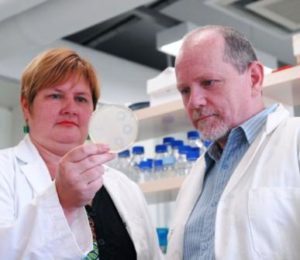
A deadly bug which strikes the sick, injured and those undergoing invasive medical procedures will come under the microscope as part of a new Flinders University study.
Researchers Professor Melissa Brown and Dr Uwe Stroeher from the School of Biological Sciences have just received a $588,242 grant from the National Health and Medical Research Council to investigate the bacteria Acinetobacter baumannii – one of the six most dangerous resistant bugs in the world.
While Acinetobacter breakouts are uncommon, when the bug does strike it usually presents in hospitals – particularly intensive care units – through person-to-person transmission or contact with contaminated surfaces.
The bacteria can cause a range of conditions including pneumonia, skin and wound infections, meningitis and blood and urinary tract infections, although it rarely affects healthy people outside of hospital settings.
Dr Stroeher said the study would investigate how the bug changes its genetic structure to go from living in the environment to the human body.
“When an organism goes from a surface to being in the body it has to change its lifestyle so we want to find out how it conditions itself to survive in these different environments,” Dr Stroeher said.
“We’ll be looking at how the bacteria’s genes are turned on and off in a host rather than in the environment, and comparing different strains of the bacteria to see what makes some strains more dangerous than others at a genetic level,” he said.
Professor Brown, who is the chief investigator of the study, said as the organism was highly resistant to disinfectant and antibiotics, it was extremely difficult to treat.
“It could be spread, for example, by cross-contamination from a computer keyboard that has the bacteria to a patient which, in turn, could lead to an entire ward needing to be disinfected,” Professor Brown, who heads Flinders Molecular Microbiology Group, said.
“But because it’s so resilient, disinfectant won’t eradicate it from the environment and if a patient gets sick there are only limited antibiotics that will treat it,” she said.
“The other particularly worrisome problem is that the bacteria can sit dormant for several weeks then reappear – if you put most bacteria on a surface they will be dead within a few days because they dry out but this bacteria can survive and be transferred even a month later.”
Although Acinetobacter breakouts were rare, Professor Brown said it was an under-researched area that could cause future problems due to the bug’s resilience.
“There’s not enough fundamental knowledge on these bacteria and with no new antibiotics on the horizon, treatment options are becoming limited,” she said.

